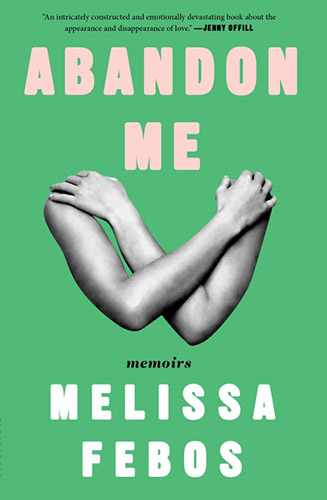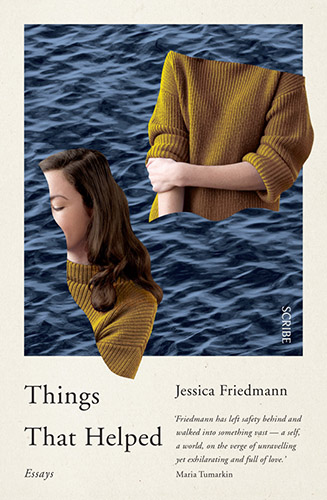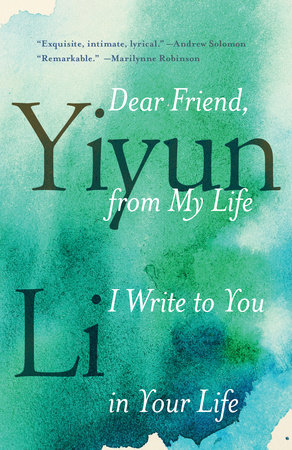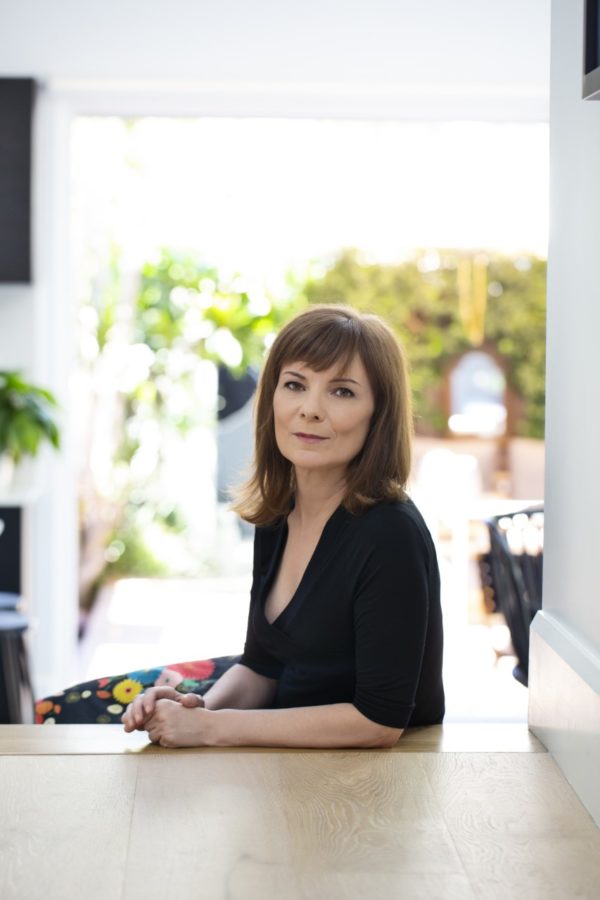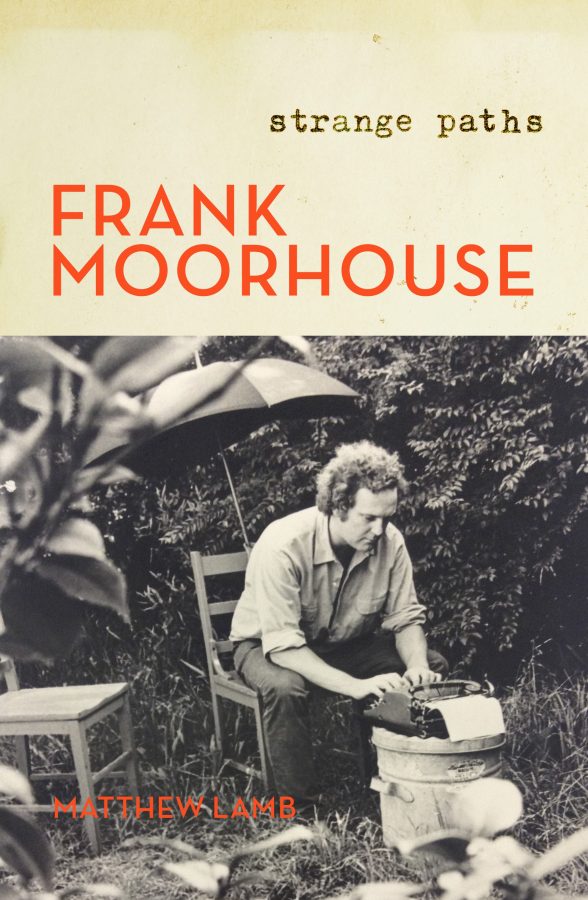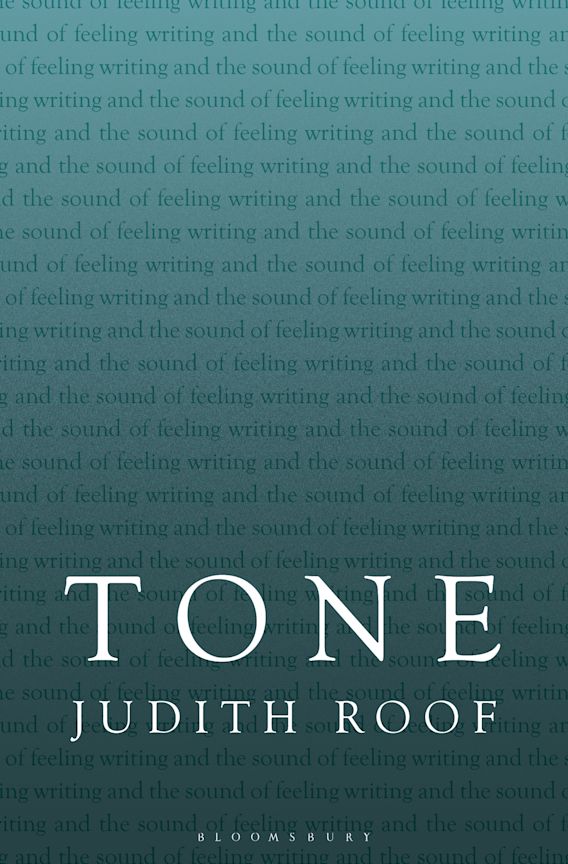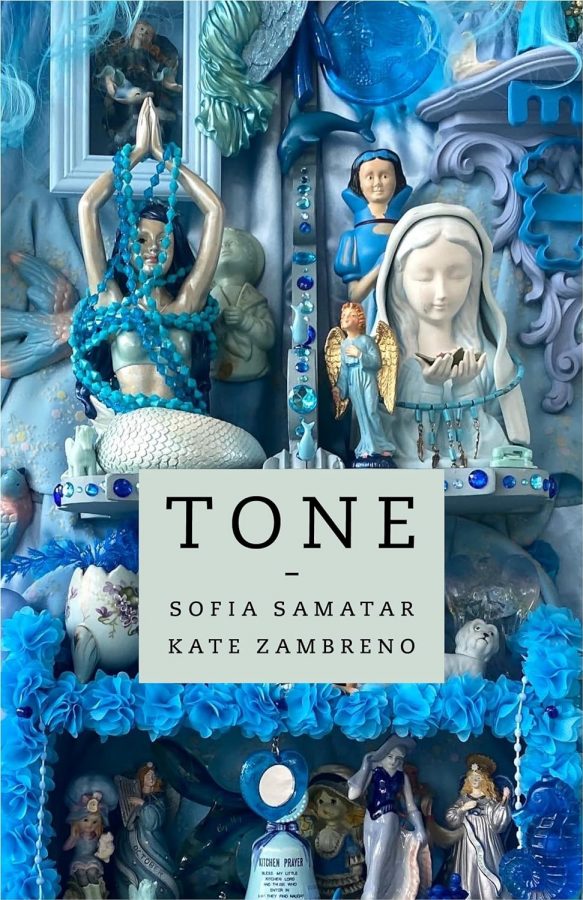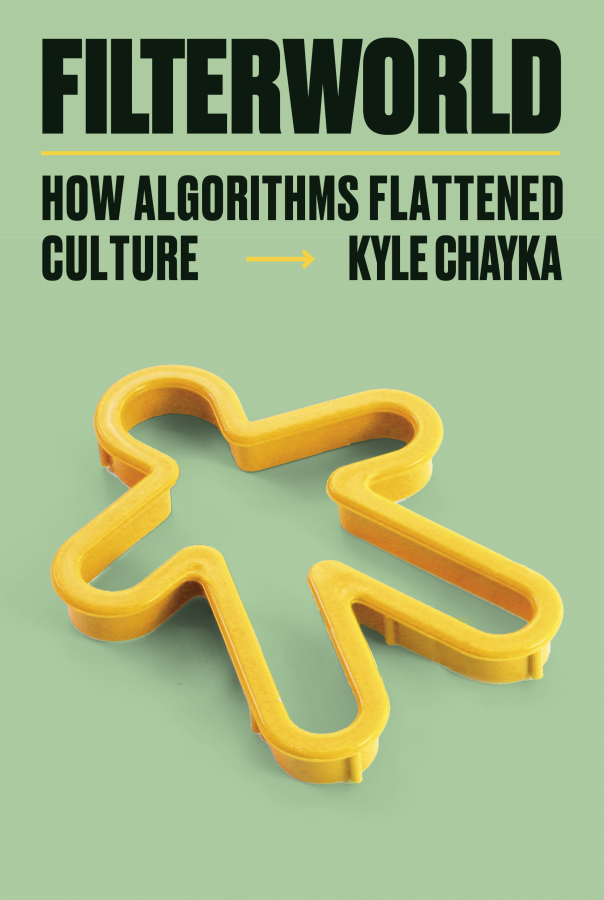There was a time
only certainty gave me
any joy. Imagine —
certainty, a dead thing.~ Louise Glück
What do we gain from wanting to know a stranger’s life? But when we read someone’s private words, when we experience her most vulnerable moments with her, and when her words speak more eloquently of our feelings that we are able to, can we still call her a stranger?
~ Yiyun Li
I’d never dreamed that I’d meet somebody like you.
Songsplinters slip through Pippilotti Rist’s installation ‘Pixelwald’ (‘Pixel Forest’). Critics describe it as delicate, ethereal and whimsical. John Macdonald prefaces his review of Rist’s recent exhibition at Sydney’s Sydney Museum of Contemporary Art, ‘Sip My Ocean’, by saying he can’t think of any artist whose work is ‘more purely delightful’.
Pixelwald’s immersive forest is enchanting. Three thousand LED lights encased in resinous crystals sway on ribbon-like cords falling to the floor. Above, a tangle of cables extends a skywards root system. Light surges and twinkles as Rist sings Chris Isaak’s ‘Wicked Game’ in a naive, childlike voice.
Only her version is called ‘I’m a Victim of this Song’, and something more combative tugs at the song’s surface. As it goes on, its smooth accusations, originally a heterosexual male lament, best imagined as at least a bit self-ironising – what a wicked game you play, to make me feel this way – are pitched higher. And higher – what a wicked thing to do, to make me dream of you. Helium-thin, almost shrill, it continues: I never dreamed that I’d lose somebody like you. Never deviating from the register of pop’s child-woman voices, the song becomes tremulous, freighted with something sharper. And then the sound is split open, cut through with a counterpointing voice, a gash of raging childlike screaming – I don’t want to fall in love – harsh as the lights as they flicker from gentle glowing pinks and yellows into white flares. By the time we get to the line, This girl is only gonna break your heart certainty is shattered. Which girl? Whose heart? Who’s doing the breaking? And is breaking altogether a bad thing? If you break, Michael Ondaatje’s speaker advises his daughter in ‘To a Sad Daughter’, ‘break going out, not in’. What if breakage can be a preface to remaking the self and voice?
The path through ‘Pixelwald’ is a wavering one, with flickering detours and pockets. Some find it light, trashy, narcissistic. In a review in The Australian Christopher Allen writes dismissively of an audience of predominantly young women. He describes installations ‘swimming in pinks and pastels, with flashing lights, hanging gauzy curtains, fragmentary projections, rooms of suspended baubles and so on’. Yet Rist disrupts this surface, interrogating scripts and schema around ‘young’ and ‘women’ as well as light, beauty and breakage.
‘Pixelwald’ – a fairytale lightpath imagining the smashed pixels of modern media –combines with other installations in Rist’s oeuvre to frame and reframe questions of agency, joy and expression. What if there were other ways of speaking? What would it sound like if our suppressed voices were heard? The disruption and volume of that child-voice – its lack of inhibition and crashing discordance – plaited with the sweet girl-voice of pop, writ large and slightly too harsh – makes for a duet so furious, so jubilant, that it is captivating, and potentially shocking. The seal on the unspeakable is torn away; the volume and lights turned up.
On the face of it, an exuberant, light work – the New Yorker’s art critic Peter Schjeldahl describes Rist as ‘an evangelist for happiness’ – ‘Pixelwald’ is also complex, hard-won joy; the joy of expressing openly multiple selves without inhibition, and at the risk of being silenced. ‘Sip My Ocean’ is not constrained by the strict dictates of binary gender mores; it something more wayward: richer, fuller and individuated. Rist’s work stages a polyvocal assay: an assessment and weighing of its elements; an immersive, joyful adventure towards collecting and weaving strands of self and voice to question what T.S. Eliot called ‘certain certainties’.
Writing about fiction, John Berger’s suggestion – ‘Never again shall a single story be told as though it were the only one – has been used by Michael Ondaatje and Arundhati Roy as an epigraph to a novel. Memoirists have been slower to explore split and braided stories. Now, more radical forms of polyvocal life writing braid and integrate strands of voice, especially those silenced by old-style gender mores.
The world was on fire and no one could save me but you.
This split and doubled voice – an expression of agony both welcome and abhorrent – runs through Yiyun Li’s Dear Friend, from My Life I Write to You in Your Life. At first, reticence is so carefully maintained that the memoir’s narrative lines are hard to discern. If memoir traditionally relies on an assertive ‘I’, what happens when this ‘I’ is elided, fractured or uncertain? Li’s story appears in glimpses: ‘After the second of two hospital stays following a difficult time’ prefaces an apparently-incidental description of a program for ‘those whose lives have fallen apart’. A quiet and ‘evasive’ patient, Li is told she is ‘not making progress’ and asked: ‘Do you want to share anything?’
After she tried to kill herself, twice, in 2012, Li began a journal:
a long argument with myself; a lucid voice questioning judiciously, and a more forceful voice speaking defiantly, sometimes in reply, other times in digression.
Part of this argument is about privacy and disclosure, and a tension between the parts of the self in search of each. Reticence, Li argues, ‘is a natural state. It is not hiding. People don’t show themselves equally and easily to all.’ Yet while invisibility may feel like ‘a luxury’, reticence ‘distances and invalidates others.’ Consolation may cloak rejection; may be a form of suppression: ‘I often saw in peoples’ efforts to make someone feel better a dismissal.’
The work stages an argument for connection – ‘against my intuition I have formed attachments – to a few people, to a profession, to an adopted language’ – and against it. The ‘pain of being close’ pushes and pulls against ‘the pain of isolation’, while writing in English, a chosen, adopted and ‘second’ language, is at once ‘a lifeline’, and one that feels as though it ‘must be dismissed as extraneous, even illicit.’ As for being an autobiographical writer – is she one, or isn’t she, she wonders? Can she be, when ‘[t]he word ‘I’ is one I hate to use in English. It is a melodramatic word.’ In Chinese, ‘one can construct a sentence with an implied subject pronoun and skip that embarrassing I, or else replace it with we.’ There is a refreshing wish in this to avoid narcissism, yet to speak for ‘we’ must begin with some version of I.
Li picks at melodrama like a scab, then tries to leave it alone, especially in the section ‘Memory is a Melodrama from Which No One is Exempt’. Here, she begins with Thomas Mann’s ‘callous criticism’ of Stefan Zweig’s suicide note as ‘quite inadequate’. To find another’s suicide (or suicidal thoughts) incomprehensible, Li suggests, involves the misunderstanding that ‘it is not that one wants to end one’s life, but that the only way to end the pain – that eternal fight against one’s melodrama so that it does not transgress – is to wipe out one’s body.’ Mann’s failure of empathy is also, of course, a form of violence, like the one Virginia Woolf evokes in Mrs Dalloway, when a traumatised, suicidal Septimus Warren Smith is briskly advised by his doctor to: ‘play cricket — that was the very game… a nice out-of-door game.’ Woolf herself was advised by doctors to ‘practice equilibrium’. That’s a nice game too, indoors and out, but, like cricket, not as easy as it looks.
Later, Li fantasises about surveying everyone – real people and fictional characters – asking: ‘How much of your life is lived to be known by others? To be understood?’ This flares into a deeper question about intimacy: ‘How much does one trust others to be known; to be understood; how much does one believe in the possibilities of one person’s knowing and understanding another?’ To be known beyond ‘our chosen version’, she argues, provokes a discomfort, as melodrama does.
Her evocation of ‘[t]he eternal fight against one’s melodrama’ alludes to the unspoken – or pixelated– story of Li’s past. At times the first person becomes the third, and the story of a girl with a mother whose own injuries mean she cannot love gives shape to the story of Li’s hidden I. Looking at others’ lives – through the reading Li charts – allows a way to access others’ lives but retain distance. She reads – Marianne Moore, William Trevor, Ivan Turgenev, Katherine Mansfield, Philip Larkin – in the hope of finding ‘the certainty I didn’t have in me’. A writer might try to find answers obliquely, to avoid autobiographical writing, – but ‘one cannot have a different biography’.
Chinese-born Li settled in America as a young immunologist. In the pieces that make up this book, she imagines being immune to ‘illnesses, follies, to love and loneliness and troubling thoughts and unalleviated pains’ but knows that ‘[o]nly the lifeless can be immune to life’. Instead, she begins what she calls an assay: ‘[a]ssays in science are part of an endless exploration’. Hers is to ‘write about a struggling mind and animates questions of repair and integration, as Rist’s work does, and as these riskier and more intuitive essays do. Li uses the term in a scientist’s sense of testing, assessing or weighing ideas, yet it carries with it a figurative sense of attentiveness to pieces of a shattered self. If traumatic experience fractures an integrated speaking position (or its illusion), memoir itself is re-imagined as polyvocal, each piece weighed as part of the work’s assay. Akin to the lyric essay, which John D’Agata describes as inhabiting a liminal space between poetry and the essay, and between the poles of what’s veriable and what’s simply not, the assay’s uncertainty and disintregation are starting points in thinking about how the shattered might be reassembled or integrated – without jumping to assume an illusory wholeness.
Li collects pieces of story and shines lights on them from different angles. At first the voiceover is that of a good girl, the ‘young lady’ addressed in hospital by a mental health worker with ‘perfect lipstick, shining curly hair, and bright blouses and flats of matching colors’. ‘Young lady, don’t lose that smile of yours’, this unbroken person says, and, on ‘a difficult day’ (again, Li draws the veil, and something unspeakable hums under reticence): ‘Young lady, why did you cry today?’
When Li responds: ‘Can’t I just be left alone in my sadness?’ the patients gathered at the dinner table smile. The ‘good girl was having a tantrum’. And although she asks for silence, for emptiness, she continues to write. Why write, then? Why this assay? Li’s title, a quote from Katherine Mansfield’s notebooks, reminds her ‘why I do not want to stop writing’. It reminds her of distance – ‘What a long way it is from one life to another’ – which may itself be salvific, dangerous or both.
‘Often I think that writing is a futile effort; so is reading; so is living. Loneliness is the inability to speak with another in one’s private language.’ And yet, and yet, Li reads, and writes these pieces, makes this assay. In a wry take on her own citational practice, she includes, among a slew of literary references, the following quotation: ‘What’s interesting to me is writers’ desire to express themselves. Not all people have such desire.’ The source: ‘[m]y husband’.
There is, at last, an unspoken sanctuary. Here is the unspeakable miracle of an unbroken story, marvellous in its ongoingness and counterpoint to a history in shards. Husband and children hover close. In one vivid sliver, she discovers a note made in the emergency room: ‘Patient stated that she felt like a burden to loved ones.’ Even this, a comment she doesn’t remember making and considers a platitude, feels narcissistic, and she dismisses it with a scathing assessment, callous as Mann’s: ‘To say a burden is to grant oneself weight in other people’s lives; to call them loved ones is to fake one’s ability to love’.
Love itself feels unfamiliar, especially the love of parents for their offspring, though loving her own children presents no problems. She watches friends with their parents, and ‘despite my theoretical understanding, it was extraordinary to see them interact with natural closeness. The fact that I find it extraordinary made me cry afterward.’ Yet sitting with her son, he puts his hand in hers ‘as though it was the most natural thing in the world. It must be, but it occurred to me that I didn’t understand it. I could approximate understanding, but it would only be that of an anthropologist.’
To leave the hospital, Li agrees to give up the ‘emergency exit’ of thoughts of ‘disappearing from the world’. This writing works to seal that exit, to disappear disappearance – and also to illuminate emergency, and ideas of exit and exile. To write, ‘one has to give up protection fundamentally’, writes Li. Yet writing might also be a sanctuary.
Good girls’ ‘tantrums’, like Rist’s toddler shrieks, unsettle certainty, not least that of form. Assaying is by definition an unstable practice, beginning in doubt, and Li’s slivers of memoirish essay-pieces stage an ongoing argument, adventure or search for one’s own language. Li draws readers close, pushes them away (and this can feel like abandonment, disappointment, frustration), writing from one life to another over a distance that may or may not be crossable.
I’d never dreamed that I’d meet somebody like you
‘In the beginning’, the phrase opening Jessica Friedmann’s Things That Helped, gestures towards a lineage of stories. Like ‘once upon a time’, it carries echoes of other stories. Specifically, she writes: ‘In the beginning there was the river’. This echoes the start of Ben Okri’s novel The Famished Road, narrated by Azaro, a spirit child tethered to the mortal world to love and bear witness:
In the beginning there was a river. The river became a road and the road branched out to the whole world. And because the road was once a river it was always hungry.
And, especially because part of Friedmann’s subject matter is motherhood and writing, the line recalls the final monologue by Bernard in Virginia Woolf’s The Waves: ‘In the beginning, there was the nursery, with windows opening on to a garden, and beyond that the sea.’ At this point in the novel, the many wayfaring voices of Woolf’s radical polyvocal narrative have been woven and integrated, collected as Bernard, a writer, who brings his focus to the work of memoir and remembering; to braiding skeins of story.
‘In the beginning there was the river.’ Friedmann continues: ‘In the months after I had my baby I would often dream of going to drown myself in it.’ While Friedmann’s directness contrasts with Li’s reticence, the pieces of her book – which she described as essays – combine, like Li’s, to weave ideas of breakage, splits and faultlines with exploration of the dynamics of repair and creativity.
Like Li’s work, Friedmann’s charts the reading that sutures and responds to injury. One essay, Siri Hustvedt’s ‘Embodied Visions’, considers art-making as a means of imaginative play that works (in Friedmann’s words) to ‘conceptualise the self as a double figure – one in the realm of physicality, one in fantasy or trance’, not unlike the fracturing that underpins Li’s ‘long argument’ with herself. Hustvedt writes
The idea expressed in the words – I’ll draw me – entails a splitting of myself into both subject and object, and this self-reflexive distance is an essentially human adventure.
While the occasion for this book is Friedmann’s experience of post-partum depression, Things That Helped points to the larger question of becoming a writer-mother, and the ways a traumatic splitting of the self might relate to a creative one, and how, in consciously reintegrating aspects of self, a powerful, self-aware and writerly subjectivity might emerge.
Often, tension between possibilities powers the pieces of Things That Helped. So when Friedmann writes about make-up in ‘Red Lips’ in an essay with the allusive sweep of a prose poem, she considers ‘the face of femininity, of a performance of womanhood geared towards social acceptance’. ‘Putting on a face’ promises that ‘my body, this leaking, porous, permeable household of my very shaky subjectivity, can be masked, held, cherished, clothed’. Yet, like Rist’s conforming and rebelling counterpoints, Friedmann captures the empowered aspects of adornment alongside the ways such masking might be a form of silencing. As she slides into the operating theatre for the caesarean section that delivers her son, Owen, she is permitted to leave her lipstick on, entering the theatre with lips ‘that stand out like flames on an otherwise pale face – the last visible sign of any choices I have made on my own behalf.’ That she conjures the image of ‘splashes of bright red, the vivid auras and fragments of Sylvia Plath’s tulips’ – underlines the symbolic power of the moment. Towards the end of Plath’s poem ‘Tulips’, there is a moment of splitting the speaker from the observed self:
And I am aware of my heart: it opens and closes
Its bowl of red blooms out of sheer love of me.
This is, again, the schism Hustvedt describes as an originating point for art. That it is evoked at a moment when Friedmann’s own body is cut open seems apt. Where Friedmann writes from a need to bear witness to aspects of motherhood – ‘we do not talk about these moments… I wonder how many women, shocked at this revelation of their secret capacity for harm, will keep their guilt and shame to themselves, and never allow themselves the opportunity to heal’ – the gaze of her writing is direct and clear.
Beyond this clear focus, there is an analogic intelligence at work, a sense of metaphor pushing behind each piece of the book, finding connections that weave each part of with others. Robert Frost found in metaphor ‘the pleasure of ulteriority’ and metaphor is at once a splitting and bridging as its origins in the Greek metapherein, to ‘transfer, carry over; change, alter; to use a word in a strange sense’. What in Li’s work feels like a debate is for Friedmann a more optimistic search for connections.
Within this complex weave of motifs of splitting and integration, and crucial to ideas of the re-integration of aspects of self, Friedmann’s treatment of intersectionality is subtle and refreshing. Always mindful of her own privilege – ‘I know walking out over a ledge that there will most likely be somebody there to catch me’ – she offers acute analysis of the axes of identity that combine to produce power and powerlessness. Central to this is her identity as the child of a Jewish father who ‘married out’. Part of this relates to psychological studies about intergenerational trauma, and epigenetic research suggesting the inheritance of trauma in relation to her experience as the granddaughter of Shoah survivors, which she explores in ‘Walking’.
Friedmann doesn’t use the term post-memory. Even so, Marianne Hirsh’s work on the relationship subsequent generations have to the trauma of their forebears suggests itself as a further frame. Like Art Spiegelman, whose Maus occasioned Hirsh’s coinage of the term, Friedmann learns of her familial history ‘in dribs and drabs’. They are ‘dots I tried not to connect’. A schism between the forgetting and bearing witness that affects survivors is inherited as a tension between knowing and not knowing these atrocious histories.
This delicate essay weaves between the known and the unknowable, gravity and levity. Friedmann’s father jokes that ‘all Jewish holidays boil down to, “They tried to kill us, they failed, let’s eat!”’, but she studies the English text of the Haggadah to find the deeper shapes of the High Holidays, and to sew herself back into the fabric, a labour of recovery aligned with the renewal of neural pathways she writes about in relation to a broader motif not just of resilience, but of re-imagining the self after breakage.
In her luminous essay ‘The Most Holy Object in the House’, Mireille Juchau uses a motif of bread-making to explore the question: ‘Where should the secular direct their existential searching?’ She writes: ‘Twice removed from the Holocaust and unscathed by it, I nevertheless feel a duty not to forget that is greater than my considerable self-consciousness about ritual.’ Although Juchau’s experiments with challah are relatively fleeting, her essay is an examplar of a challah-like poetics: weaving the strands of its themes enacts an assay without a solution, but always in the direction of hosting those aspects of self – including the inherited and those submerged by trauma – in and as a creative practice that enables integration and vitality.
Friedmann quotes Dana Jack on ‘the self-silencing behaviour that comes with severe depression’:
Self-silencing is prescribed by norms, values and images dictating what women are ‘supposed’ to be like: pleasing, unselfish, loving. As I listened to the inner dialogues of depressed women, I heard self-monitoring and negative self-evaluation in arguments between the ‘I’ (a voice of the self) and the ‘Over-Eye’ (the cultural, moralistic voice that condemns the self for departing from culturally prescribed ‘shoulds’).
I thought about this after reading an anonymous review in Publisher’s Weekly that described Things That Helped as a ‘cobbled together’ book. I hear again Rist’s orchestration of voices, and the re-intregration this scores and dramatises, as well as the invisibility of this to some observers, for whom it feels as though the old narratives need not be broken, or that breakage is better elided, vanished or effaced. The nameless Publisher’s Weekly reviewer might yearn for the pleasing closure that follows most stories that start with the words ‘in the beginning’, hopeful that Friedmann might ‘reveal the evolution of her love for her son – and herself’, but there are skeins here, not a single narrative strand, and it is in their braiding that hopes of making and loving are recovered.
It’s strange what desire will make foolish people do
If Li’s work has a bold shyness, and Friedmann’s is centrifugal, allusive and acute, Melissa Febos’ Abandon Me is writing of unshackled ferocity. In the Acknowledgements, she describes the work of ‘making darkness visible’. The phrase is Milton’s: ‘No light’, he writes in Paradise Lost, ‘but making darkness visible’. William Styron used the phrase for the title of his memoir about depression subtitled ‘A memoir of madness’. Instead of any easy binary – darkness or light, liberty or abandonment, wounding or healing – Febos maps the interstices and explores the possibilities of an incantatory binding derived from observing without flinching difficult and contradictory aspects of self and relationship. Again, the work’s power lies in allowing all aspects of herself be seen and heard – from the fearful child who watched her parents recede to the woman who is honest about demanding of her partner reassurance no one can give (‘There was no way to prove that she would not leave again.’)
Towards the end of the 62-piece essay – or rather, assay – ‘Abandon Me’ that makes up half of the book, Febos writes about calling her mother, unsure about the book. ‘I think I want to write about all this’, she says. The problem is that ‘it’s about too many things. It’s not enough of any one thing.’ Her mother’s reply invites her to see the ways her work embraces the discomfort of uncertainty: ‘It’s about you… About how you are not enough of any one thing…’. And yet it is about more than the self, and dissolves another false binary: self or other, expanding not unlike Li’s hunger for we, not I.
On the first day of her college classes, Febos often invites her students to do an uncomfortable exercise. She asks them to make direct eye contact with another student for one minute. When we write about something, she tells them,
you have to look at it. You have to look long enough that your own reflection fades. If you want to write about yourself, I tell them, you must meet your own gaze with the same attention.
We all craft a story we can live with. The one that makes ourselves easier to live with. This is not the one worth writing. To write your story, you must face a truer version of it. You must look at the parts that hurt, that do not flatter or comfort you.
This echoes Li’s idea of being known ‘beyond your chosen self’, and the strength that involves. Abandon Me begins with an essay titled ‘The Book of Hours’, an extraordinary meditation on the courage of loving, and waiting for a lover. Febos meets the eyes of parts of herself full of fear; those whose refrain is I can’t do this as she waits while her lover returns home to her wife to see their marriage through to its end. Uncertainty and distance, writes Febos, ‘are similar afflictions… The mind – a dumb, houndish thing – still tries to solve them’.
Meeting her own eyes, she sees the two facets of the word that gives the collection its shape and centre: abandon. She describes joking with friends about their abandonment issues, but elsewhere, in the office of a therapist, she glimpses the true size of these: ‘like the dark length of a whale passing beneath a boat… the shock of my own smallness, the strength of the unseen, how easy capsizing could be.’ Yet abandon is also bliss and homecoming, recognition and ease, a joyful state. Febos’ lover evokes abandon’s to-and-fro after their first kiss: your kiss, she writes, ‘took something from me, or gave me something. I’ll never stop thinking of it.’
Among the reading Febos celebrates is that of Rilke’s ‘Book of Hours’, modelled on Christian devotional tracts. Although this is not a section Febos quotes, Rilke’s lines resonate:
I want to unfold.
I don’t want to stay folded anywhere,
because where I am folded, there I am a lie.
Febos’ devotional assays work to make darkness visible but its reach seems to extend. Her lover’s absence gives her the opportunity to explore the abandonment with herself, that takes her back to farewelling her father, a ship’s captain, and her childhood’s relentless tension between hope and fear. Abandonment, she writes, means ‘That I had learned to leave myself’ and that she is bound to ‘retell the story’ until she finds a different ending: ‘Until I learned to stay’.
Her evocation of waiting is exquisite. But her grasp, she feels, slips:
I cannot render anything precisely in words, as I cannot crush my lover’s body inside of mine. All I can do is leave a mark – the notation of my effort, a symbol for the thing. That is the endless pleasure and frustration of the writer and the lover: to reach and reach and never become.
For Febos, the liminal moment between meeting her partner and her partner’s return to her becomes a space in which the dark shapes of abandonment circle through her life.
There is one key part of her story that she herself has abandoned. Jon, her biological father, was ‘a fact the size of a postage stamp’. One of those facts – one he himself lied to conceal – was that he was Wampanoag. The pain she experiences when she is separated from her lover and the search for her father are connected: ‘I didn’t mean to lose myself. And I never planned to find my father.’ The spectre of loss she encounters while she is unable to be with her beloved activates a larger loss and illuminates the violence of racist histories and their erasure of identity.
So when she draws these strands together, towards the end of ‘Abandon Me’, individual trauma is posited as symptomatic of historical trauma, and abandonment writ large:
Historical trauma is a legacy of trauma, of erasure. I believe in the science of genealogy. But I don’t think science invented us – we invented it. We saw the symptoms of centuries of genocide, of lost language, of estrangement, and we called them systems.
In a 2017 essay titled ‘The Heart-Work: Writing About Trauma as a Subversive Act’
Febos writes:
I am done agreeing when my peers spit on the idea of writing as transformation, as catharsis, as—dare I say it—therapy. Tell me, who is writing in their therapeutic diary and then dashing it off to be published? I don’t know who these supposedly self-indulgent (and extravagantly well-connected) narcissists are. But I suspect that when people denigrate them in the abstract, they are picturing women. I’m finished referring to stories of body and sex and gender and violence and joy and childhood and family as ‘navel-gazing’.
For Febos, ‘the bias against “personal writing” is a sexist mechanism, founded on the false binary between the emotional (female) and the intellectual (male), and intended to subordinate the former.’ She quotes Maggie Nelson, who writes in The Argonauts of being asked by a man
how she could possibly pen a book on the subject of cruelty while pregnant: ‘Leave it to the old patrician white guy to call the lady speaker back to her body, so that no one misses the spectacle of that wild oxymoron, the pregnant woman who thinks. Which is really just a pumped-up version of that more general oxymoron, a woman who thinks.’
The thinking woman is related to – or may be one and the same with – the talking woman Nelson writes about when she describes a shame taught to girls who like words – a misogynistic eye-roll, a there she goes again. Febos’ work is a work of thinking-through. In her essay she calls the work of Abandon Me
an exercise in applying my intellect, and the intellects of other thinkers—philosophers, psychologists, holy people, poets—to the raw matter of my own abandonments. It is about having abandonment issues.
That is, the work is a labour both emotional – the heart work – and intellectual. She writes of keeping a quote from Rilke’s Letters to a Young Poet over her desk: ‘The work of the eyes is done. Go now and do the heart-work on the images imprisoned within you.’
Claudia Rankine’s Don’t Let Me Be Lonely (2004) is subtitled ‘an American lyric’. Its formal hybrid and direct eye/I set the tone of and stage for her next book, Citizen (2014), which carries the same subtitle. In it, Rankine examines ‘I’, asking
If I am present in a subject position what responsibility do I have to the content, to the truth value, of the words themselves? Is ‘I’ even me or am ‘I’ a gear-shift to get from one sentence to the next? Should I say we? Is the voice not various if I take responsibility for it? What does my subject mean to me?
In Li’s, Friedmann’s and Febos’ work, the polyvocal I draws together facets of self and subjectivity, braiding them, while unbraiding simpler notions of a singular, truthful I. As reticence and disclosure speak together, or loss and hope, or the I and we of postmemory and of empathy, form becomes capacious. Like Febos’ ‘Abandon Me’, each of these works proceeds piece by piece like a poem, stanza by stanza, assays that get where they do by breaking both linear narrative and certainty, and by reassembling the smashed pieces to see what light they might shed and what delight they might preface.
Resilience is much-celebrated, and rightly so. But beyond it lies something more dazzling: the possibilities of re-integrating aspects of self, and the creation of polyphonic, vagrant forms to reflect this. Instead of the blunt weaponry of simplistic identity politics – imprisoning gender binarism, simplistic assessments from outside of one’s identity, most often for the purposes of bludgeoning (too much of one thing, not enough of another – assumptions that always begin in ignorance of the multifaceted nature of identity) – these are works of the hard head- and heart-work of re-calibrating and re-imagining self and form – large, as Whitman had it, containing multitudes.
Cited
John D’Agata, ‘We Might As Well Call It the Lyric Essay’
Melissa Febos, ‘The Heart-Work: Writing About Trauma as a Subversive Act’, Poets and Writers
Mireille Juchau, ‘The Most Holy Object in the House’, Tablet
